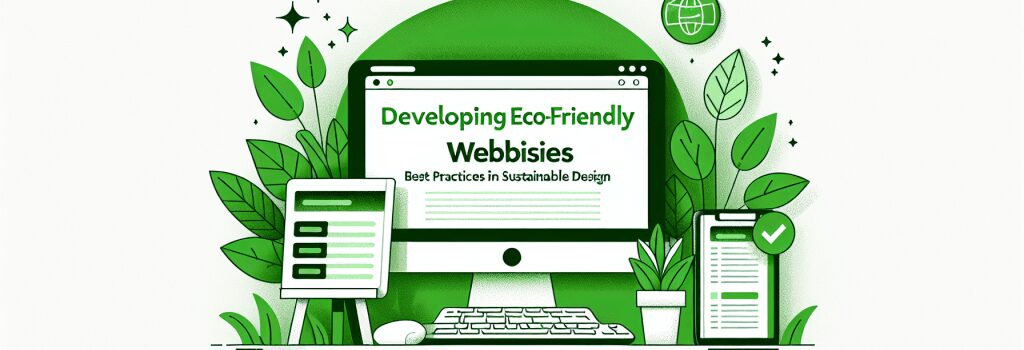Developing Eco-Friendly Websites: Best Practices in Sustainable Design

Introduction
Welcome, future eco-friendly web gurus! It’s time to dive into the world of sustainable design. If you’re imagining planting digital trees, sorry to burst your bubble, but it’s not quite that literal. Although, who knows?! With the right amount of coding knowhow, maybe you could plant the first digital forest. But hold your ferns, for now, let’s discuss websites.
What is Sustainable Web Design?
Sustainable or Eco-friendly web design is all about creating and maintaining websites with minimised environmental impact. You’d be surprised at the carbon emission happening right under our fingertips each time we scroll through a webpage. So to all the potential Greenpeaces— we mean developers— out there, let’s get our hands digitally dirty and save some kilobytes!
Green is The New Black
Creating an eco-friendly website isn’t just about jumping on the green bandwagon. It’s an essential practice that guides the future of web development. Plus, who doesn’t want to add “Saving the world, one web page at a time” to their LinkedIn bio?
So, let’s break down some core practices of creating such Web Avengers— we mean websites.
Minimise HTTP Requests
HTTP Request sounds pretty intimidating, right? Is it a request to have tea with the Queen? (One sugar or two, Lizzie?) Actually, every time a webpage loads, it sends out HTTP requests to fetch various bits like CSS, javascript, images etc. More elements on the page, more these requests, and more energy required. Our solution? Keep the design simple, use CSS instead of images where possible, and combine multiple files into one.
Optimize Images
Speaking of images, using them efficiently is key. No, we’re not telling you to ditch photos of cute kittens, just make sure they are optimized, resized and compressed correctly. Nothing says “climate change is real” like an unnecessary 3MB photo of Fluffy on a homepage.
Use Green Hosting
If you’re thinking, “Oh, another fancy buzzword,” (eye roll), green hosting essentially means a web hosting provider that uses renewable energy or plants trees to offset its carbon emissions. Opting for green hosting might not sound like much, but think about how cool it sounds telling your friends, “My website runs on solar power!”
Default to Dark Mode
No, this does not mean turning into Darth Vader. Dark mode reduces the energy required to light up the pixels on your screen. It’s an easy switch, but like all good superheroes, it can add up to a lot when used by many.
Minimise the Use of External Resources
Ever heard of the phrase “less is more”? It’s a minimalist’s mantra and a sustainable web designer’s secret spell. Reducing external addons like fonts, ads, trackers, and plugins not only reduces HTTP requests (remember the Queen’s tea?) but also improves your website speed.
Conclusion
Saving the world one webpage at a time may not have the same ring as leaping tall buildings in a single bound, but it’s equally vital. Together, we can create not just responsive but also responsible websites. Remember, it’s not just about coding for the sake of coding, but coding for a green cause. Now go green, you eco-friendly superhero, you!
As we conclude, let’s not forget the most essential principle: Don’t print this page, bookmark it instead!
P.S.: Fluffy thanks you for your eco-conscious efforts. He’s one less cat against climate change.


